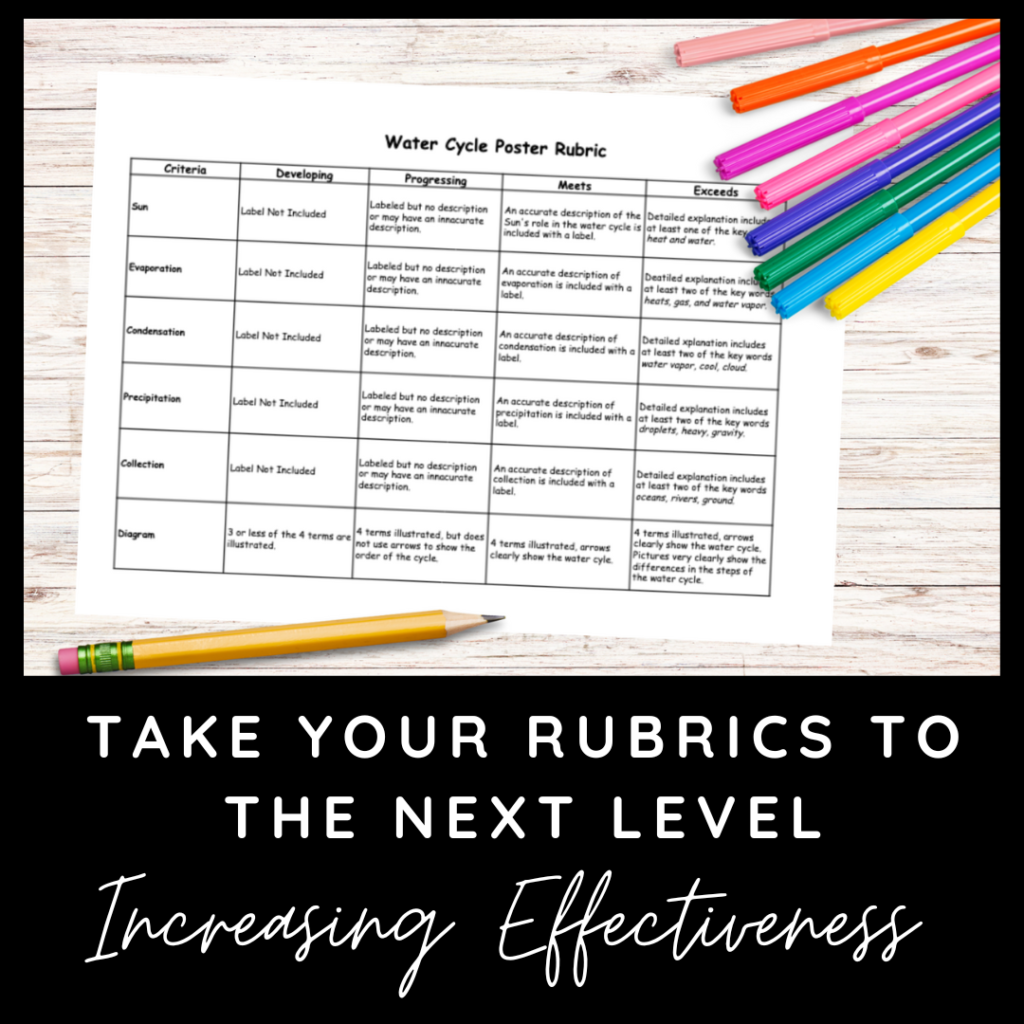A rubric is supposed to make grading projects or presentations more fair. But do they always? No, they don’t always grade as fairly as we hope. That’s why it’s important to reflect after you grade projects with a rubric for the first time. You can do the following activity to check. Do on your own using several examples of student’s graded work, or you can do it as a grade-level team.
Assess level 2 “progressing” work
A progressing learner is one that is just below the “meeting expectations” level. They did something but did not meet all the requirements to get full credit. Gather several examples of student work at this level. If you are doing it as a team, each team member should present one or two projects they graded as “progressing”.
When you look at the quality of work these learners produced were they really at a similar level?
If the work isn’t the same level, which work should have been on a different level? Why wasn’t the work graded that way?
What could you revise on the rubric for next time so that teachers grade more similarly?
Assess “meeting expectations” work
Next, gather a few examples of student work that have been graded as “meeting expectations”. They fullfilled all the requirements of your rubric.
When you look at the quality of work these learners produced, were they really at a similar level?
Does the quality of work receiving a “meets” make you confident that this learner meets the grade level standard?
If the graded work for “meets” isn’t the quality you had imaged or hoped for in the project, you probably need to adjust the rubric so that it is more clear on what meeting expectations should look like. I’ve included all these questions on a reflection sheet you can download for free by clicking on the button below.
Rubrics may not be graded as you planned for numerous reasons. It might be that the language used in the rubric is unclear or confusing. It might be that the teachers don’t fully understand how to use the rubric. Sometimes though it’s just that we didn’t consider certain end products the students might create when we were designing the rubric. For example, a rubric might say that the student can accurately calculate three multiply step problems in order to get meets. However, what if they showed all the steps correctly but made a small error in one of the calculations? Technically they didn’t accurately calculate the problems. But it seems a bit harsh to take the student to the lower level after they completed so much of the “meets” expecation. If you are interested in reading more about designing quality rubrics, make sure to check out my other posts on how to grade projects with a rubric and how to take your rubrics to the next level.
Other posts you might like:



